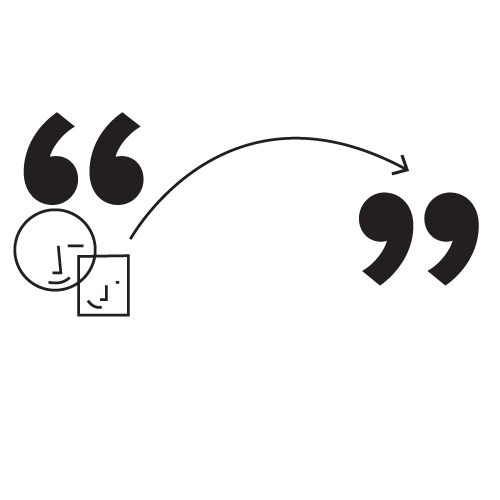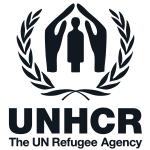UNHCR Innovation Service
The Year in Review 2016
Looking back from the future
Looking back to 2016
We asked our colleagues what they thought of 2016 and what the future will bring.
What is the one thing you learned in 2016?
Dejan, Senior Protection Officer: Don’t be afraid of taking risks.
Rumbidzai, Resettlement Assistant It’s important to work with beneficiaries when problem solving, refugees have the best insights on solutions to their challenges, an “innovation by refugees for refugees” approach is important and empowering to the refugees.
What one thing would you like to see changed?
Andrew, Senior Field/Site Coordinator: I would like to see our agency culture and sense of identity improved – I feel that currently, both internally and externally, our culture smacks of arrogance, competition, and exclusivity. I would love to see a culture where staff do a better job of looking out for one-another (a sense of teamwork and community), partners see us as inclusive and deserving of our (self-imposed) leadership role, and we treat the inputs and opinions of refugees, partners, volunteers, governments, and others with as much value as those of our ‘hyper-educated’ colleagues.
What will the world look like in 10 years time?
Anonymous: It is important to not only change the discourse but also act on it. We see that displacement has changed in the past 10 to 15 years and UNHCR has been influential in changing the discourse around displacement but very slow in changing its policies and more importantly the ways it does business and the mindsets and behaviour of its staff. An organization is only as strong as its staff and one thing I would like to see changed in 2017 is for UNHCR to implement the changes it seeks externally also internally.
What one action is required in 2017 to meet that future?
Edina, Admin Programme Associate: It’s hard to say only one, because I think more action should be done parallel to reach a better and positive future in the long run. Main keys for this year can be: innovation, communication, cooperation. Support and spread innovative approach among people, peaceful communication in conflicts, establish new partnerships or find new ways of cooperation.

Practical tips for innovating in UNHCR
The word innovation is ubiquitous and confusing to most. We’d use a different word if we could. So what are the first steps for including innovation into your day-to-day work at UNHCR? And what does it actually look like in practice?
It’s easier than you might think.
We’ve outlined practical applications of the innovation process to help get you started. Try to innovate how you innovate, whether that’s in your team, division, or entire operation. Employ some of the practical tips in this list and other ideas found throughout this publication. If you still have questions – drop us an email.

Be brave.
Innovation is not an easy process but it is worth it. You will have to iterate and fail along the way – but use it as an opportunity to learn. Take the risk to try something new and it will pay off dividends in the end.
Ask the right question.
You won’t get an appropriate solution if you’re not asking the right question. Defining your challenge is a crucial step in the innovation process. Keep it short and make sure it only contains one challenge. You can continue to tweak your challenge question until you’ve identified the right problem.
Engage refugees.
Refugees are better at knowing what works for them and what doesn’t. They are great innovators and full of their own ideas. Ask refugees for their feedback throughout the process – but explore opportunities to empower them as innovators themselves.
Ideate.
Take advantage of other people’s creativity and facilitate a brainstorming session with your team members, colleagues, and refugees to create new ideas. Invite people with a wide range of disciplines. Crazy ideas are welcomed and should be built upon.
Experiment.
Innovation is never about silver bullets. Learn by doing. Try new things. Keep testing your original idea or process. Discover what works and what doesn’t. Then experiment again.
Challenge your assumptions.
Everytime we approach a problem, we bring assumptions that limit our ability to think about new solutions. Think critically about the assumptions underlying your innovation and then test them in a systematic way.
Collaborate.
Work with other divisions, bureaux, external companies, academia, and others during the innovation process. Choose a partner with different skills and ideas. Go outside the usual suspects. Be flexible and open to different types of collaboration.
Embrace failure.
Acknowledging that failure happens to the best of us, and using that opportunity to build the skills needed to learn from one’s mistakes is key
Copy someone else’s idea.
When is innovation simply imitation? Often. Look at promising practices that already exists elsewhere and apply it to your operation and context.
Launch a UNHCR Innovation Challenge.
Ask UNHCR staff and members of the public to suggest great new ideas. Offer a prize or an incentive. Give people a clear focussed goal and they will surprise you with novel ideas.
Innovate with everyone.
Include targets for innovation within your team, division or operation. Measure these targets and the impact you’ve had. Don’t just have one innovation focal point – include innovation into everyone’s objectives. Before you realize it, everyone will be a champion of innovation.

Videos
We are a service
